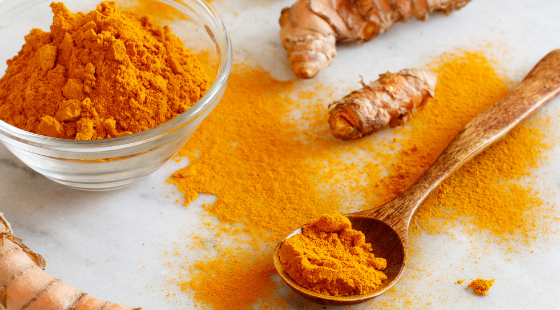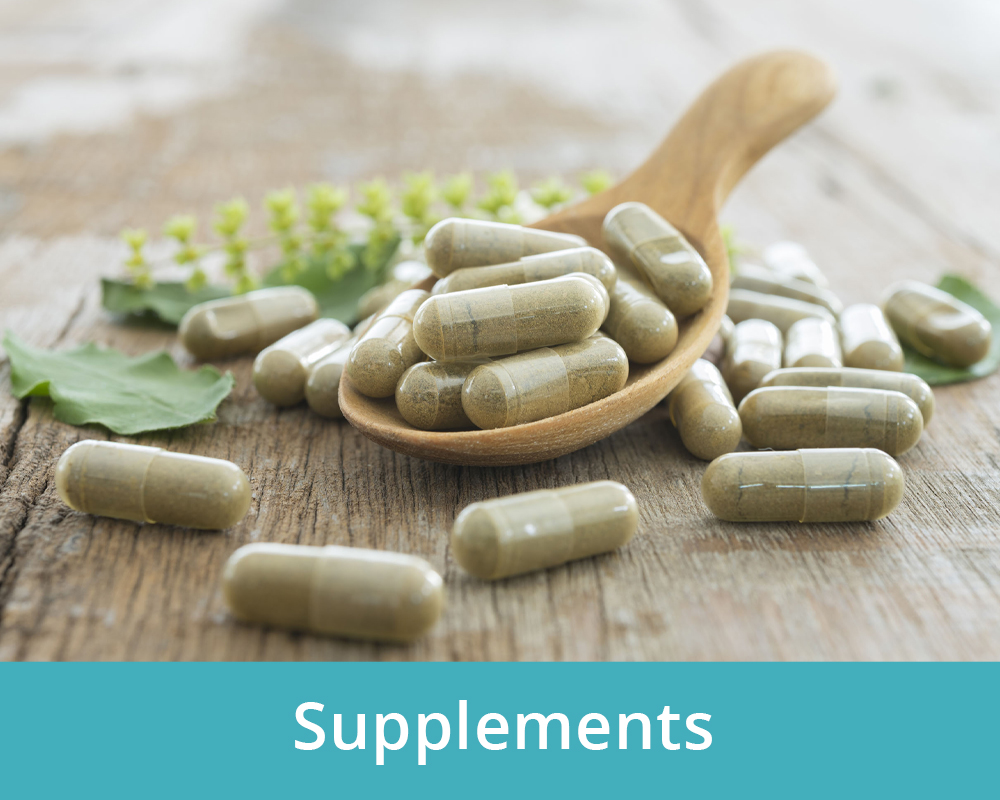
Nutrition Tips To Manage Feelings Of Anxiety With Return To Work Or School

The COVID-19 global pandemic changed how life looked for most of us. Hours spent stuck in traffic, packing lunches, and long days at work or school quickly turned into working or learning remotely, snacking on the couch, and more time spent at home with the family. These changes brought on unique stressors of their own which challenged us to adapt and pivot. It has been over a year and half since the first lockdown began, and we are now in a position to adjust again to reintegrating back to school and work, potentially in new ways, or just adjusting to getting back after being off for so long.
While some of these changes may feel exciting, other changes are likely bringing feelings of apprehension for many of us. After growing accustomed to remote learning and working, beginning to join our peers and colleagues at school and work once again, comes with unique stressors that may lead to increased feelings of anxiety.
The following nutrition tips will focus on how to best cope with these feelings of anxiety by adjusting what we put into our body. It is important to note that experiencing feelings of anxiety is different than living with an anxiety disorder, where these feelings are prolonged and intensified. In this case it is always recommended to seek assistance from an appropriate medical professional such as a naturopathic doctor, your family doctor, and/or an experienced mental health professional.
Get More Vitamin D
Vitamin D is famously known as the “sunshine vitamin”. This is because when our skin is exposed to sunlight, vitamin D is produced naturally by our bodies. However, you can also get vitamin D through certain foods and supplementation. This is important to consider when living in the northern hemisphere where the access to sunlight is significantly reduced, especially as we enter into the winter months.
Deficient levels of vitamin D are well correlated with symptoms of depression, but more research is showing insufficient vitamin D levels are correlated with individuals with anxiety disorders (1) as well as with fibromyalgia patients with increased anxiety symptoms (2). More recently, researchers have tested vitamin D as a supplement for supporting anxiety symptoms, with positive results. Women with type 2 diabetes who demonstrated significant anxiety symptoms were provided with weekly vitamin D supplementation for six months. Outcome measures showed a significant decrease in anxiety symptoms, suggesting that vitamin D supplementation can improve mood (3)!
A reliable source of vitamin D is from oily fish such as salmon, mackerel, and sardines! Our brand-new recipe for one pot Mediterranean mackerel pasta is an excellent option get your vitamin D. For individuals looking for non-animal options for vitamin D, mushrooms can also be a good source, (4). If you’re looking for a new mushroom recipe, take a look at our Glazed Mushroom and Edamame Stir Fry!
But despite your best effort vitamin D is hard to get from food sources alone and supplementation is highly recommended. Check out this great vitamin D supplement.
Incorporate Omega-3 Fatty Acids In Your Diet
The brain, in particular, is highly concentrated in PUFAs including omega-3s. The brain uses omega-3s to help maintain the functioning of our brain cells. They surround our brain cells to help preserve cell membranes and improve communication between cells (5). When communication between our brain cells is optimized it positively impacts both our thinking skills as well as our mood. Research that demonstrated that reduced dietary intake of omega 3 was associated with an increase in depression and anxiety disorders (6).
With the marked association between Omega 3 and mood disorders. A systematic review examined 19 clinical trials who used omega-3 supplementation with individuals with clinical anxiety symptomology, the omega-3 supplementation significant improved anxiety symptoms (7).
How can you make sure that you’re consuming sufficient levels of omega-3s?
The most abundant sources of omega-3s are fatty fish including salmon, sardines, mackerel, and herring. Check out Smoked Salmon and Avocado Toast recipe as a fun way to get more salmon into your breakfast! Given that these fish are such rich sources of omega-3s, many supplements are derived from fish oils. However, for plant-based options, flax and chia seeds are high sources of omega-3s that can be incorporated into your diet.
Load Up On B-Vitamins
The B-complex is actually a group of water-soluble B-vitamins, meaning that your body does not store these vitamins in fat tissue, therefore it gets used up in the body quickly. The B-complex includes a list of well-known vitamins such as thiamine, riboflavin, niacin, folate, and more. These individual vitamins have been grouped into the B-complex as they are commonly found together in similar foods and often rely on each other for optimal performance in the body. Evidence suggests B-complex supplementation can assist in managing mood, including anxiety symptoms.
In a recent study on over 7000 adults, the relationship between B-vitamin intake and anxiety-symptoms was examined. Researchers found that a higher intake of B-vitamins was correlated with lower odds of anxiety (8). A separate study explored the effect of supplementation of B-vitamins in combination with Ashwagandha, on anxiety symptoms in adult women. It was found that after four weeks of supplementation, anxiety symptoms, measured both by self-report questionnaires and physiological responses (i.e. heart rate), were reduced (9).
The B vitamins are commonly found together in food, meaning that you shouldn’t have to focus on incorporating multiple food sources to get all of your B-vitamins in! Leafy greens, including spinach and kale are high in B-vitamins, particularly folate. Eggs are also a good source of B-vitamins, including biotin! Check out Quinoa Kale and Fritter recipe which contains both of these ingredients to bump up your B-vitamin intake!
Drink your Chamomile Tea
Chamomile is one the most well-recognized herbs in the world. It has been used for thousands of years in traditional medicine to calm anxiety and anxiety-related symptoms, such as upset stomach. Most commonly, chamomile is consumed as a tea, best had before bed due to its relaxing properties.
Anxiety-related disorders have been associated with increased levels of inflammation in the brain. Neuroimaging demonstrated increased inflammation in anxiety-related areas of the brain, which correlated with anxiety behaviours (10). Chamomile is known to have anti-inflammatory effects. Specifically, research has demonstrated that chamomile actually inhibits the gene expression of molecules that increase inflammation, such as nitric oxide (11). Secondly, chamomile is also believed to provide calming effects through its modulation of neurotransmitters related to mood. For example, chamomile is able to bind to a neurotransmitter referred to as GABA, and when it does so, it leads to feelings of sleepiness (12). Chamomile, specifically its flavonoid compounds, down-regulate the HPA axis, resulting in reduced anxiety symptoms (13).
With a better understanding of these mechanisms, it is evident why studies evaluating the long-term effects of chamomile on Generalized Anxiety Disorder (GAD), found positive results. Researchers found that 38 weeks of chamomile extract treatment significantly reduced moderate and severe symptoms of GAD (14).
Eat Less Refined Sugar
Lastly, it is important to mention the role refined sugar can play in triggering feelings of anxiety. There is a marked difference between refined sugars and natural sugars, such as those found in fruits. Natural sugars, when consumed in their whole food form, are digested slower and therefore do not result in large spikes and dips in your blood sugar levels. Natural sugars are also found in foods, such as fruits, which contain fibre and essential vitamins for our body. On the other hand, refined sugar, which typically comes from cane sugar goes through processing to extract the sugar and does not contain essential vitamins. Consumption of refined sugar leads to large spikes and dips in your blood sugar, which impacts mood stability. We’ve all been “hangry”, right?
The relationship between blood sugar and symptoms of anxiety has been exemplified by studies finding a correlation between diagnosis of diabetes and anxiety symptoms. One study examining this correlation found that adults with diabetes were 20% more likely to be diagnosed with anxiety compared to healthy controls (15). This evidence suggests that removing refined sugar from your diet is likely a smart strategy to help manage anxiety symptoms.
While individuals may find it difficult to cut out refined sugar from their diet, an effective strategy may be to find healthier replacement. Maple syrup is an option that fits this description and has been recently used in Koru’s Apple Berry Crisp recipe. It is important to note that adding maple syrup to your current diet is not recommended, but rather using this an alternative to the refined sugar you are currently consuming. For more on this topic, check out our article on best sugar alternatives.
In Summary
It isn’t uncommon to be experiencing feelings of anxiety during this challenging time. However, by supporting your body through your food choices, you have the power to better manage these feelings.
We hope you find these nutrition tips helpful! If you feel you would benefit from more one-on-one support with adjusting your diet to support your mood, you can book an appointment with one of our clinicians here.
References
- Bicikova, M., Duskova, M., Vitku, J., Kalvachova, B., Ripova, D., Mohr, P., & Starka, L. (2015). Vitamin D in anxiety and affective disorders. Physiology Research, 64(2), 101-103. doi: 10.33549/physiolres.933082
- Armstrong, D., Meenagh, G., Bickle, I., Lee, A., Curran, E., & Finch, M. (2007). Vitamin D deficiency is associated with anxiety and depression in fibromyalgia. Clinical Rheumatology, 26, 551-554. doi: 10.1007/s10067-006-0348-5
- Byrn, M., Adams, W., Emanuele, M., Mumby, P., Kouba, J., & Wallis, D. (2017). Vitamin D Supplementation Improves Mood in Women with Type 2 Diabetes. Journal of Diabetes Research, 2017, 1-11. doi: 10.1155/2017/823863.
- Cardwell, G., Bornman, J., James, A., & Black, L. (2018). A Review of Mushrooms as a Potential Source of Dietary Vitamin D. Nutrients, 10(10), 1498. doi: 10.3390/nu10101498.
- Dyall, S. (2015). Long-chain omega-3 fatty acids and the brain: a review of the independent and shared effects of EPA, DPA, and DHA. Frontiers in Aging Neuroscience, 7, 52. doi: 10.3389/fnagi.2015.00052
- Müller, C. P., Reichel, M., Mühle, C., Rhein, C., Gulbins, E., & Kornhuber, J. (2015). Brain membrane lipids in major depression and anxiety disorders. Biochemical Journal, 1851, 1052–1065. doi: 10.1016/j.bbalip.2014.12.014
- Su, K., Tseng, P., & Lin, P. (2018). Association of Use of Omega-3 Polyunsaturated Fatty Acids with Changes in Severity of Anxiety Symptoms. JAMA Network Open, 1(5), 1823-1827. doi: 10.1001/jamanetworkopen.2018.2327
- Mahdavifar, B., Hossseinzadeh, M., Salehi-Abargouei, A., Mirzaei, M., & Vafa, M. (2021). Dietary Intake of B vitamins and their association with depression, anxiety, and stress symptoms: A cross-sectional, population-based survey. Journal of Affective Disorders, 288(1), 92-98. doi: 10.1016/j.jad.2021.03.055
- Li, I. (2020). Stress & anxiety improvements with Ashwagandha and B-vitamins. University of Delaware, 2020. https://udspace.udel.edu/handle/19716/28420
- Felger, J. (2018). Imaging the Role of Inflammation in Mood and Anxiety-related Disorders. Current Neuropharmacology, 16(5), 533-558. doi: 10.2174/1570159X15666171123201142
- Bhaskaran, N., Shukla S., Srivastava, J., & Gupta, S. (2010). Chamomile, an anti-inflammatory agent inhibits inducible nitric oxide synthase expression by blocking RelA/p65 activity. International Journal of Molecular Medicine, 26(6), 935-940. doi: 10.3892/ijmm_00000545
- Amsterdam, J., Li, Q., Xie, S., & Mao, J. (2020). Putative Antidepressant Effect of Chamomile (Matricaria chamomilla L.) Oral Extract in Subjects with Comorbid Generalized Anxiety Disorder and Depression. Journal of Alternative and Complementary Medicine, 26(9), 813-819. doi: 10.1089/acm.2019.0252
- Keefe, J., Guo, W., Li, Q., Amsterdam, J., & Mao, J. (2018). An Exploratory Study of Salivary Cortisol Changes During Chamomile Extract Therapy of Moderate to Severe Generalized Anxiety Disorder. Journal of Psychiatric Research, 96. 189-195. doi: 10.1016/j.jpsychires.2017.10.011
- Mao, J., Xie, S., Keefe, J., Soeller, I., Li, Q., & Amsterdam, J. (2016). Long-term Chamomile (Matricaria chamomilla L.) treatment for generalized anxiety disorder: a randomized clinical trial. Phytomedicine, 23(14), 1735-1742. doi: 10.1016/j.phymed.2016.10.012
- Li, C., Barker, L., Ford, E., Zhang, X., Strine, T., & Mokdad, A. (2008). Diabetes and anxiety in US adults: findings from the 2006 behavioural risk facto surveillance system. Diabetic Medicine, 25(7), 878-881. doi: 10.111/j.1464-5491.2008.02477.x










